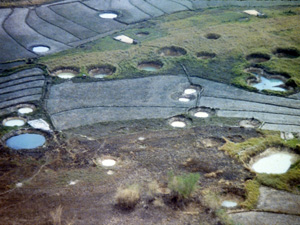
1983 aerial image of the Plain of Jars region in northern Laos which was replete with bomb craters left over from the heavy U.S. bombing during the Indochina War. [Source: legaciesofwar.org] 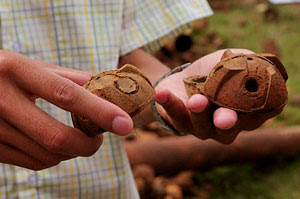
Recovered cluster bomb. [Source: legaciesofwar.org]
Laotians continue to be crippled and maimed by unexploded ordnance left over from the Indochina War.
Because of the world’s indifference, only one percent of 80 million undetonated antipersonnel bombs have been cleared.
On a bright Saturday morning, August 2, 2008, Yae Li, a middle-aged rice farmer with six children, was hoeing his rice fields as usual in Xieng Khouang, Laos, on the Plain of Jars when all of a sudden his life was changed forever.
Yae’s hoe struck an undetonated ordnance lodged in the ground, a remnant from the U.S. secret war in Laos lasting from 1964 to 1975.
The bombie exploded and Yae’s body flew backwards. He lost both of his feet, parts of his legs and a hand; at the time he thought he would die.
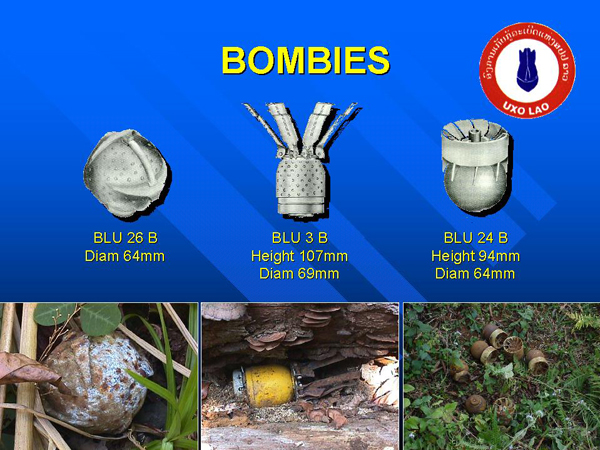
After his recovery he and his family suffered greatly. Yae could no longer farm his land and his eldest son had to drop out of school to help feed the family. With money tight, the other kids sometimes lacked food, and it was hard to pay for school fees. Yae himself became depressed and lost his purpose in life, asking why he had to “endure this suffering.”
Eventually his fortunes changed when an NGO raised funds to buy him a tractor and help him establish a store in town, though life for him and his family remains very difficult.
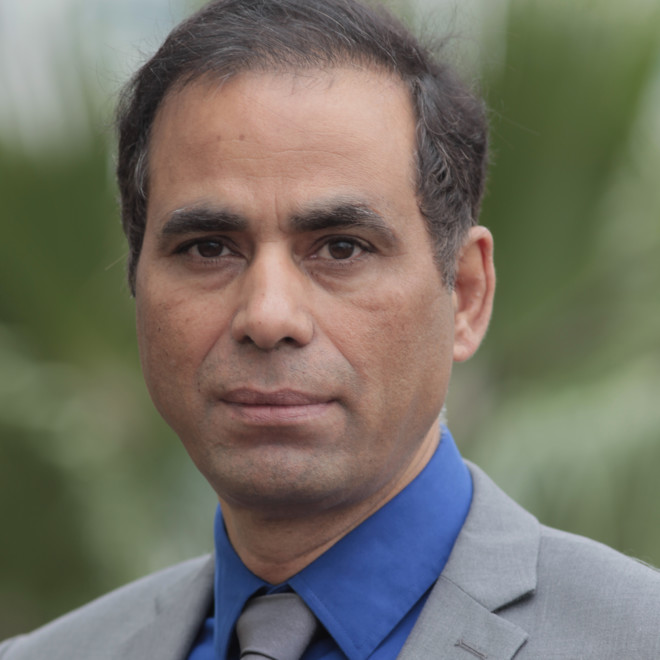
Waiting to Explode
Yae’s story is told in a new documentary film, Waiting to Explode: Forgotten Bombs of a Secret War.
Director Shuja Paul said that he made the film in an attempt to bring international attention to the deadly humanitarian crisis in Laos.
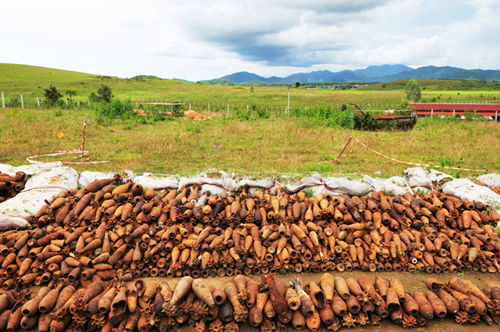
The United States dropped more ordnance on Laos during the Indochina War than it did on Germany and Japan during World War II.
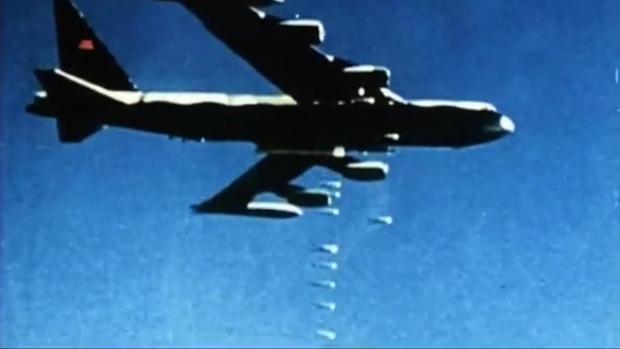
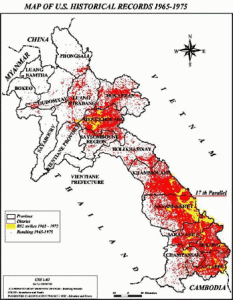
The purpose of the bombing was to cut off North Vietnamese communist supply routes to South Vietnam along the Ho Chi Minh trail and terrorize villagers in northern Laos who were supporting the pro-Communist Pathet Lao.
The latter had led the liberation war against France and won elections in 1958 that were sabotaged by the Central Intelligence Agency (CIA), which created a private army among the indigenous Hmong people to fight the Pathet Lao—backed up by the massive bombing.

The majority of the bombs that the U.S. Air Force dropped were cluster bombs—manufactured by Honeywell Corporation of Minnesota—that were not designed to destroy tanks but human beings.

Some 35,000 Laotians were reported to have been killed during the war, and another 20,000 after from unexploded ordnance which remained buried in rice paddies and fields.
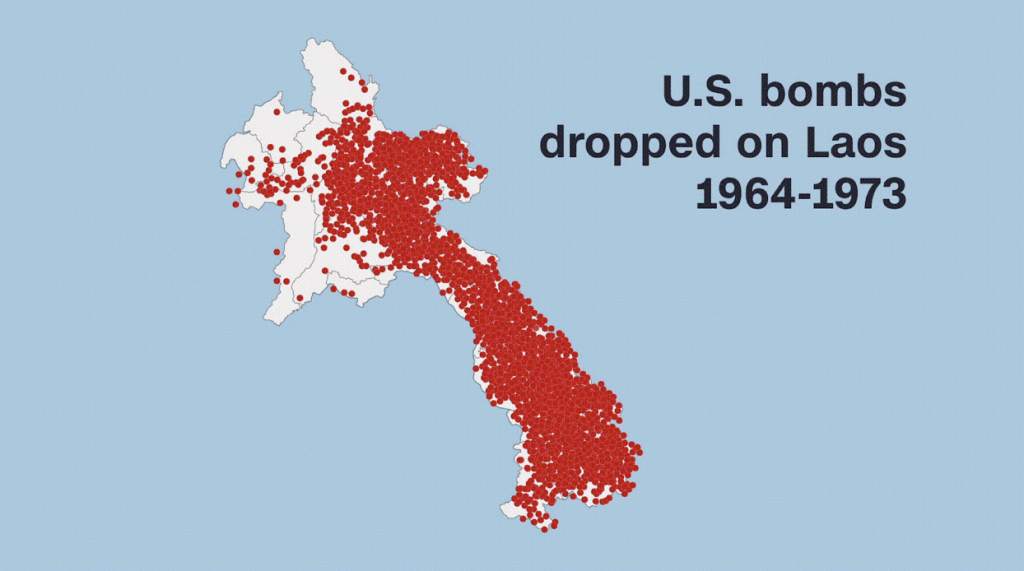
In the last 45 years, only one percent of the undetonated ordnance from the war has been cleared—owing largely to public indifference.
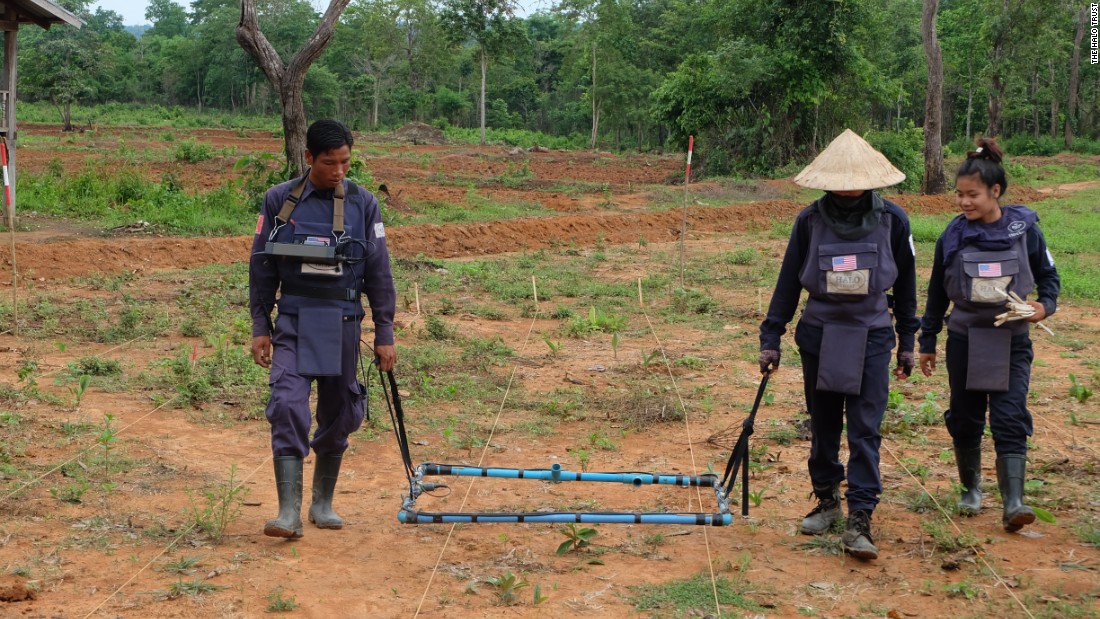
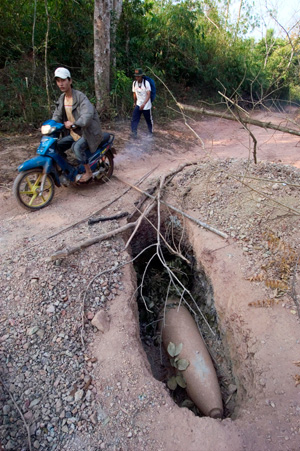
The Obama administration pledged $90 million over three years to help clear the ordnance—nearly the same amount that had been given over the previous 20 years—which is not nearly enough. At least 79 million bombs remain uncleared and waiting to go off.
Voices from the Plain of Jars
Waiting to Explode includes an interview with Fred Branfman, a U.S. aid worker who helped expose the secret bombing of Laos before the U.S. public in the early 1970s.
Branfman was a hippie adventurer who had come to love the Laotian people after working as an educational adviser in the country beginning in the late 1960s.

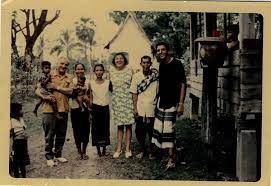
He especially admired how the priorities and values of the Laotians were different from most Americans—they had few material possessions but respected and loved nature and treasured time spent with friends and family.
After discovering that the U.S. was secretly bombing the northern part of the country, Branfman recorded the testimony of villagers who had to survive the attacks hiding in caves, often coming out at night to farm their fields.
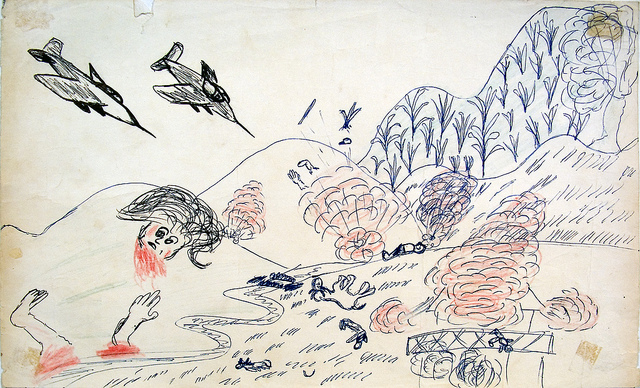
Many lost loved ones and had to leave their villages which were destroyed. Branfman interviewed kids struck by napalm and who were blinded and maimed by the bombs and traumatized.
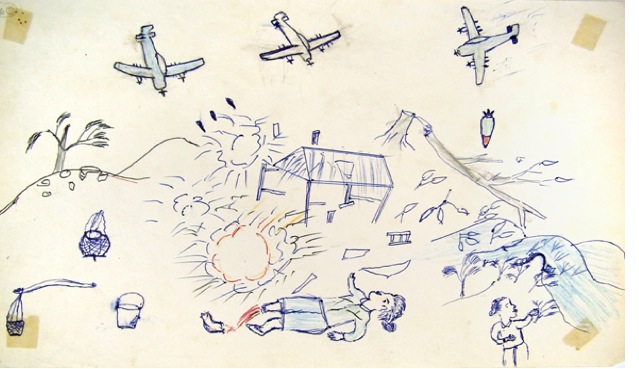

Infiltrating the U.S. Air Force base in Thailand where the bombings were carried out, Branfman found the businesslike atmosphere eerie. The attacks, he uncovered, were carried out because U.S. pilots had run out of targets in North Vietnam. Monteagle Stearns, deputy chief of mission in Laos from 1969 to 1972 told Congress: “We had all those planes sitting around and couldn’t just let them stay there with nothing to do.”
In 1971, Branfman tried to alert the U.S. public that major war crimes were taking place by testifying before the U.S. Senate Foreign Relations Committee, and a year later published the book Voices from the Plain of Jars, which recorded the experiences of Laotian refugees whom he had interviewed.
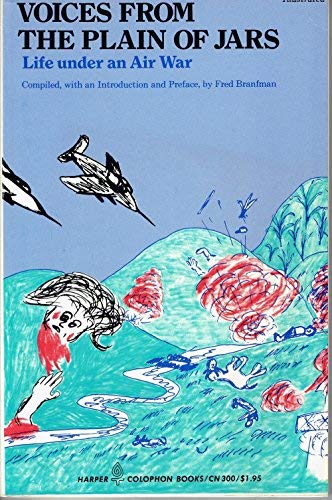
[Source: amazon.com] 
Fred at work on his book. [Source: nytimes.com]
Decades later when Branfman returned to the Plain of Jars, he was struck by how many people from the region were still adversely impacted by the bombing. One man, for example, said he had ten water buffalo when he had 100 prior to the Indochina War.
Terrible Human Costs of War
Besides Yae Li, Waiting to Explode spotlights the suffering of numerous other victims of the U.S secret war in Laos. One of them, Chongcher Vue, lost his young son Mai and two nephews when Mai was playing with his friends and picked up an undetonated bomb that exploded.
Another boy, Ka Ying, who was only two at the time, lost his vision and many of his teeth, and had his face deformed, when he was playing in the dirt near his house and picked up a bomb that exploded in his face.

With the help of an NGO, Ka Ying’s family was able after some years to get him medical attention in Thailand, and he is currently doing okay in a school for the blind.
His grandmother, who helped raise the boy, cried every day for months after the accident.
This and other heart-wrenching stories remind us of the terrible human costs of the U.S. war in Indochina—which the public remains largely oblivious to.

CovertAction Magazine is made possible by subscriptions, orders and donations from readers like you.
Blow the Whistle on U.S. Imperialism
Click the whistle and donate
When you donate to CovertAction Magazine, you are supporting investigative journalism. Your contributions go directly to supporting the development, production, editing, and dissemination of the Magazine.
CovertAction Magazine does not receive corporate or government sponsorship. Yet, we hold a steadfast commitment to providing compensation for writers, editorial and technical support. Your support helps facilitate this compensation as well as increase the caliber of this work.
Please make a donation by clicking on the donate logo above and enter the amount and your credit or debit card information.
CovertAction Institute, Inc. (CAI) is a 501(c)(3) non-profit organization and your gift is tax-deductible for federal income purposes. CAI’s tax-exempt ID number is 87-2461683.
We sincerely thank you for your support.
Disclaimer: The contents of this article are the sole responsibility of the author(s). CovertAction Institute, Inc. (CAI), including its Board of Directors (BD), Editorial Board (EB), Advisory Board (AB), staff, volunteers and its projects (including CovertAction Magazine) are not responsible for any inaccurate or incorrect statement in this article. This article also does not necessarily represent the views the BD, the EB, the AB, staff, volunteers, or any members of its projects.
Differing viewpoints: CAM publishes articles with differing viewpoints in an effort to nurture vibrant debate and thoughtful critical analysis. Feel free to comment on the articles in the comment section and/or send your letters to the Editors, which we will publish in the Letters column.
Copyrighted Material: This web site may contain copyrighted material the use of which has not always been specifically authorized by the copyright owner. As a not-for-profit charitable organization incorporated in the State of New York, we are making such material available in an effort to advance the understanding of humanity’s problems and hopefully to help find solutions for those problems. We believe this constitutes a ‘fair use’ of any such copyrighted material as provided for in section 107 of the US Copyright Law. You can read more about ‘fair use’ and US Copyright Law at the Legal Information Institute of Cornell Law School.
Republishing: CovertAction Magazine (CAM) grants permission to cross-post CAM articles on not-for-profit community internet sites as long as the source is acknowledged together with a hyperlink to the original CovertAction Magazine article. Also, kindly let us know at info@CovertActionMagazine.com. For publication of CAM articles in print or other forms including commercial internet sites, contact: info@CovertActionMagazine.com.
By using this site, you agree to these terms above.
About the Author

Jeremy Kuzmarov holds a Ph.D. in American history from Brandeis University and has taught at numerous colleges across the United States. He is regularly sought out as an expert on U.S. history and politics for radio and TV programs and co-hosts a radio show on New York Public Radio and on Progressive Radio News Network called “Uncontrolled Opposition.”
He is Managing Editor of CovertAction Magazine and is the author of six books on U.S. foreign policy, including Obama’s Unending Wars (Clarity Press, 2019), The Russians Are Coming, Again, with John Marciano (Monthly Review Press, 2018), Warmonger. How Clinton’s Malign Foreign Policy Launched the U.S. Trajectory From Bush II to Biden (Clarity Press, 2023); and with Dan Kovalik, Syria: Anatomy of Regime Change (Baraka Books, 2025).
Besides these books, Kuzmarov has published hundreds of articles and contributed to numerous edited volumes, including one in the prestigious Oxford History of Counterinsurgency .
He can be reached at jkuzmarov2@gmail.com and found on substack here.

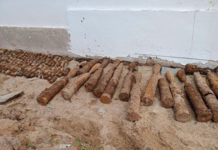
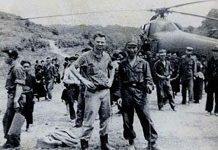

[…] Research, December 06, 2021CovertAction Magazine 4 December […]
[…] Laotian Lives Matter, by Jeremy Kuzmarov […]
Sorry to read more about what belligerence we operate with
Our malevolent military politic is a boomerang too, as we see now in the Homeland
Thank you for writing